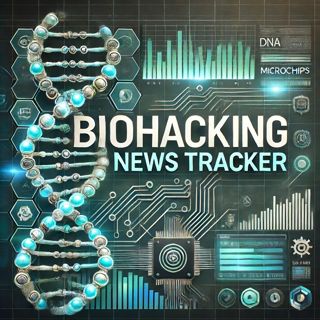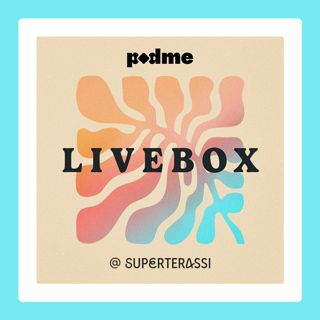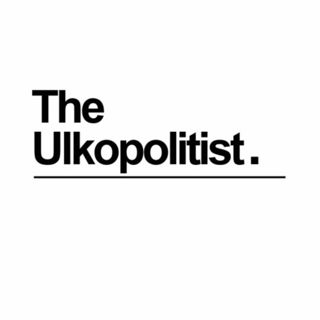
The Biohacking Boom: Transforming Personal Health through Innovation and Technology
The biohacking industry has experienced significant growth in recent years, driven by increasing consumer interest in personalized healthcare, advancements in wearable technology, and rising awareness of preventative health measures. According to recent market research, the global biohacking market size was valued at USD 24.06 billion in 2024 and is projected to grow from USD 28.49 billion in 2025 to USD 133.19 billion by 2034, exhibiting a CAGR of 18.7% during 2025–2034[1].Key factors driving the biohacking market demand include the integration of artificial intelligence (AI) and machine learning in biohacking tools, the expansion of nootropics and nutraceuticals, and the rise of DIY biology practices. The market is supported by a demand for data-driven solutions to optimize physical and cognitive well-being. Wearable devices such as fitness trackers, smartwatches, and continuous glucose monitors have become popular among consumers aiming for real-time health insights[1].The pharmaceutical and biotechnology companies segment dominates the market share, driven by their extensive use of biohacking techniques in drug discovery, development, and production processes. These companies leverage biohacking tools such as genetic engineering and synthetic biology to accelerate innovation and improve the efficacy of therapeutics[1].North America holds the largest share of the biohacking market revenue, primarily driven by advanced healthcare infrastructure, high consumer awareness, and significant investments in biotechnology and wearable technologies. The region’s leadership is further supported by a strong presence of key market players and a well-established ecosystem for research and development in personalized medicine and genetic engineering[1][2].Emerging trends in the biohacking market include the increasing focus on personalization in healthcare and wellness, which is driving adoption and creating new opportunities for market expansion. Companies are emphasizing integrating advanced technologies, such as AI, wearable devices, and synthetic biology, to meet evolving consumer needs. Marketing efforts include partnerships with healthcare providers and research institutions to establish credibility and expand application areas[1][3].However, the biohacking market faces challenges associated with regulations, poor education, and low awareness, as well as significantly priced biohacking solutions. The market is also hampered by ethical concerns about gene editing and strict regulatory issues, especially those associated with health claims and genetic modifications[4][5].In response to current challenges, industry leaders are focusing on innovation and consumer accessibility. Companies are leveraging direct-to-consumer approaches, social media, and influencer marketing to educate and engage health-conscious users. The increasing demand for personalized health solutions and growing alliances with healthcare providers are also driving market growth[1][4].Comparing current conditions to the previous reporting period, the biohacking market has seen a steady increase in market size and growth rate. The market is expected to continue growing, driven by advancements in biotechnology, growing interest in personal optimization, and rising health awareness. However, addressing regulatory challenges and improving consumer education will be crucial for sustained growth in the biohacking industry.This content was created in partnership and with the help of Artificial Intelligence AI
17 Tammi 3min

Biohacking Boom: Revolutionizing Personal Health and Performance
The biohacking industry is experiencing rapid growth, driven by increasing consumer interest in personalized healthcare solutions and advancements in biotechnology. Recent market movements indicate a significant expansion, with the global biohacking market expected to reach USD 168.3 billion by 2035, growing at a CAGR of around 18.8% between 2025 and 2035[1].Key growth opportunities in the biohacking market include offering customized mental health optimization services, combining meditation and herbal treatments with biohacking, and creating platforms for tracking biomarkers to prevent diseases and optimize health[1]. Wearable devices, particularly fitness trackers and smartwatches, dominate the market due to their widespread adoption for health monitoring and personalized insights.North America leads the biohacking market, driven by early adoption of technological advancements, substantial investments in research and development, and a growing awareness of biohacking practices[2][3]. The U.S. dominates the North American market, with a share of 71.75% in 2023, due to heavy investments by the government and key market players in research and development[3].Emerging competitors and new product launches are also driving market growth. For instance, the integration of AI for data analysis and insights is revolutionizing personalized biohacking approaches, aiding in precise interventions based on individual biology[2]. The Asia Pacific region is anticipated to witness significant growth, driven by a rapidly expanding middle-class population with increasing disposable income and a heightened focus on health and wellness[2].Recent statistics indicate that the global biohacking market was valued at USD 20.94 billion in 2023 and is projected to grow at a CAGR of 18.6% from 2024 to 2030[3]. The market is experiencing a shift towards more personalized and data-focused biohacking approaches, driven by the availability of wearable health trackers, genetic testing kits, and smart devices.Industry leaders are responding to current challenges by leveraging cutting-edge technologies, including artificial intelligence, genetic engineering, and advanced biometric sensors, to develop innovative biohacking products and services[2]. For example, the use of nootropic drugs, external and internal implants, and DIY biohacking setups are becoming increasingly popular[5].In comparison to the previous reporting period, the biohacking market has witnessed significant growth, driven by increasing consumer interest in personalized healthcare solutions and rapid advancements in biotechnology. The market is poised to redefine healthcare, offering transformative solutions to enhance health, performance, and longevity.Overall, the biohacking industry is experiencing remarkable growth, driven by technological advancements, increasing health awareness, and the desire for personalized solutions. As the market continues to evolve, industry leaders are responding to current challenges by developing innovative products and services that cater to the growing demand for personalized healthcare solutions.This content was created in partnership and with the help of Artificial Intelligence AI
15 Tammi 3min

Biohacking Industry Booms with Personalized Healthcare and Biotech Advancements
The biohacking industry is experiencing rapid growth, driven by increasing consumer interest in personalized healthcare solutions and advancements in biotechnology. Recent market movements indicate a significant expansion in the global biohacking market size, which was valued at USD 24.53 billion in 2023 and is projected to reach USD 113.03 billion by 2032, growing at a CAGR of 18.50% during the forecast period[5].Key factors contributing to this growth include the rising adoption of wearable health trackers, genetic testing kits, smart devices, and apps that allow individuals to track and analyze their biometric data. The increasing prevalence of chronic diseases and the growing awareness of biohacking practices among consumers are also driving market growth[2][4].North America currently dominates the biohacking market, with a market share of 36.7% in 2023, due to heavy investments in research and development and an aging population in the region[2]. The U.S. biohacking market, in particular, holds a significant share of 71.75% in 2023, driven by government and key market player investments in research and development[2].Emerging competitors in the biohacking market include companies like Thync Global, Inc., Health Via Modern Nutrition Inc., Apple Inc., The ODIN, Fitbit, Inc., Nuanic, and Muse, which are transforming well-being by combining technology, science, and human performance[2].New product launches in the biohacking market include advanced wearable devices, nootropic drugs, and innovative technologies like neurofeedback and CRISPR, which are addressing applications in health monitoring, cognitive enhancement, and nutritional optimization[3].Regulatory changes are also impacting the biohacking market, with strict regulations governing genetic engineering experiments and health claims posing challenges to market growth[4][5]. However, the growing demand for personalized health solutions and the increasing alliance with healthcare providers are creating opportunities for the biohacking market[5].In terms of consumer behavior, there is a shift towards adopting biohacking practices for health optimization, longevity, and prevention of diseases. The growing geriatric population is also driving demand for biohacking technologies[5].Price changes in the biohacking market are influenced by the high cost of advanced technologies and investment barriers, which may prevent some consumer segments from adopting biohacking solutions[5].Supply chain developments in the biohacking market include the growing adoption of wearable devices and health applications, which is boosting their availability and driving market growth[5].Industry leaders are responding to current challenges by investing in research and development, expanding into progressing markets, and increasing access to biohacking solutions. For example, companies are creating platforms that allow individuals to track key biomarkers, helping to prevent diseases and optimize health[1].Comparing current conditions to the previous reporting period, the biohacking market has experienced significant growth, driven by increasing consumer interest in personalized healthcare solutions and advancements in biotechnology. The market is expected to continue growing, with a projected CAGR of 18.50% during the forecast period[5].In conclusion, the biohacking industry is experiencing rapid growth, driven by increasing consumer interest in personalized healthcare solutions and advancements in biotechnology. Industry leaders are responding to current challenges by investing in research and development, expanding into progressing markets, and increasing access to biohacking solutions. The market is expected to continue growing, with a projected CAGR of 18.50% during the forecast period.This content was created in partnership and with the help of Artificial Intelligence AI
13 Tammi 4min

The Booming Biohacking Industry Redefining Personalized Wellness
The biohacking industry is experiencing significant growth driven by technological advancements, increasing health awareness, and the desire for personalized solutions. Recent market movements indicate a robust expansion, with the global biohacking market size projected to reach USD 168.3 billion by 2035, growing at a CAGR of around 18.8% between 2025 and 2035[1].Key growth determinants include the genetic engineering sector, which is revolutionizing healthcare, agriculture, and biotechnology by enabling precise manipulation and editing of genetic material. This has sparked extensive research and investment into gene therapies targeting genetic disorders and certain types of cancers[2].Wearable devices, particularly fitness trackers and smartwatches, dominate the market due to their widespread adoption for health monitoring, fitness tracking, and personalized insights. These devices are widely embraced due to their affordability, ease of use, and seamless integration with smartphones and health apps[1][3].The North American region leads the market, driven by early adoption of technological advancements, substantial investments in research and development, and a growing awareness of biohacking. The U.S. market, in particular, holds a significant share due to heavy investments by the government and key market players[3][5].Emerging competitors and new product launches are also driving market growth. Companies like Thync Global, Inc., Health Via Modern Nutrition Inc., Apple Inc., and Fitbit, Inc. are transforming well-being by combining technology, science, and human performance[3].Regulatory changes and significant market disruptions are also shaping the industry. The integration of AI for data analysis and insights is revolutionizing personalized biohacking approaches, aiding in precise interventions based on individual biology[2].Consumer behavior is shifting towards a more proactive approach to wellness, with individuals seeking novel methods to enhance their lifespan, prevent or deal with health issues, and optimize their mental and physical abilities. This trend has significantly boosted the utilization of biohacking tools and methods[2][3].In terms of supply chain developments, the market reflects a dynamic landscape characterized by fierce competition and rapid technological advancements. Start-ups and well-established businesses are leveraging cutting-edge technologies to create a wide range of biohacking products and services[2].Comparing current conditions to the previous reporting period, the biohacking market has grown exponentially, with the market size increasing from USD 20.94 billion in 2023 to USD 29.42 billion in 2023, and projected to reach USD 36.41 billion in 2024 at a CAGR of 23.7%[3][4].Overall, the biohacking industry is poised for substantial growth driven by technological advancements, increasing health awareness, and the desire for personalized solutions. Market leaders are responding to current challenges by investing in research and development, leveraging cutting-edge technologies, and creating innovative products and services to meet the growing demand for biohacking solutions.This content was created in partnership and with the help of Artificial Intelligence AI
12 Tammi 3min

Biohacking Boom: Unlocking the Future of Personalized Healthcare
The biohacking industry is experiencing rapid growth, driven by increasing consumer interest in personalized healthcare solutions and advancements in biotechnology. Recent market movements indicate a significant expansion, with the global biohacking market size expected to reach USD 83 billion by 2032 from USD 19 billion in 2023, growing at a CAGR of 18.4%[5].Key factors contributing to this growth include the rising prevalence of chronic diseases, increased health awareness, and the availability of wearable health trackers, genetic testing kits, and smart devices that allow individuals to track and analyze their biometric data[2][3]. The demand for advanced wearable devices, particularly wearable medical devices, accounted for the largest revenue share at over 34%[5].The diagnosis and treatment segment held the largest revenue share of over 32.3% in 2023, with the monitoring segment dominating the market and treatment expected to grow at the fastest CAGR[3]. Hospitals and clinics represented the largest end-user segment, accounting for 34% of the market, followed by forensic laboratories, which are expected to record a CAGR of more than 21.5% during the forecast period[3].North America led the market with a 39% revenue share, followed by Asia Pacific, which is anticipated to witness significant growth with a CAGR of 20.6% due to the rise in healthcare expenditure and the population's willingness to invest in their health[3][5].Emerging trends in the biohacking market include the integration of Eastern and Western medicine, microbiome engineering, and synthetic biology. The rise of DIY biology and biohacking spaces fosters global collaboration and innovation, while regulatory bodies emphasize safety and oversight[5].Industry leaders are responding to current challenges by focusing on personalized health optimization services, combining biofeedback, nootropics, and personalized treatments. For example, companies like Thync Global, Inc., Health Via Modern Nutrition Inc., Apple Inc., and Fitbit, Inc. are transforming well-being by combining technology, science, and human performance[3].Comparing current conditions to the previous reporting period, the biohacking market has seen exponential growth, driven by increased health awareness, access to information, and entrepreneurial culture. The market is expected to continue growing, with a focus on longevity and anti-aging, nootropics and cognitive enhancement, and mainstream adoption of biohacking practices[2].In conclusion, the biohacking industry is experiencing remarkable growth, driven by advancements in biotechnology and growing consumer interest in personalized healthcare. With a projected market size of USD 83 billion by 2032, industry leaders are responding to current challenges by focusing on personalized health optimization services and innovative technologies. The market is poised to redefine healthcare, offering transformative solutions to enhance health, performance, and longevity.This content was created in partnership and with the help of Artificial Intelligence AI
8 Tammi 3min

The Biohacking Boom: Transforming Wellbeing with Technology, Science, and Human Performance
The biohacking industry has experienced significant growth in recent years, driven by increasing consumer interest in personalized healthcare solutions and rapid advancements in biotechnology. The global biohacking market size was valued at USD 26.38 billion in 2023 and is anticipated to reach around USD 155.63 billion by 2033, growing at a CAGR of 19.42% from 2024 to 2033[5].Key drivers of this growth include the rising prevalence of chronic diseases, increased health awareness, and the availability of wearable health trackers, genetic testing kits, smart devices, and apps that allow people to track and analyze their biometric data[2][4]. Wearable devices, particularly wearable medical devices, accounted for the largest revenue share at over 34% in 2023[3].The market is also driven by the increasing adoption of intelligent drugs and genetic modification kits. Biohackers can make data-driven decisions to improve their longevity and overall well-being with this information at their fingertips[4]. The hospitals and clinics segment held the largest share of 40.3% in 2023, credited to the increase in chronic diseases and their treatment[4].North America led the market in 2023 with a market share of 36.7%, driven by the increasing prevalence of chronic illnesses, increased awareness of biohacking, and an aging population in the region[4]. The U.S. biohacking market size was estimated at USD 7.77 billion in 2023 and is predicted to be worth around USD 46.11 billion by 2033 at a CAGR of 19.49% from 2024 to 2033[5].Recent market movements include the growing adoption of biohacking practices by forensic institutes, which is expected to support the segment's growth with a CAGR of more than 21.5% during the forecast period[4]. The Asia Pacific biohacking market is anticipated to witness significant growth with a CAGR of 20.6%, attributing to the rise in healthcare expenditure that has led to economic growth in the region[4].Industry leaders are responding to current challenges by combining technology, science, and human performance to transform well-being. Companies such as Thync Global, Inc., Health Via Modern Nutrition Inc., Apple Inc., The ODIN, Fitbit, Inc., Nuanic, and Muse are at the forefront of this trend[4].In comparison to the previous reporting period, the biohacking market has seen an increase in the adoption of wearable devices and genetic testing kits, driven by consumer interest in personalized healthcare solutions. The market is expected to continue growing at a robust rate, driven by the increasing prevalence of chronic diseases and the rising demand for advanced healthcare solutions.Key statistics include:- The global biohacking market size was valued at USD 26.38 billion in 2023 and is anticipated to reach around USD 155.63 billion by 2033, growing at a CAGR of 19.42% from 2024 to 2033[5].- Wearable devices accounted for the largest revenue share at over 34% in 2023[3].- The hospitals and clinics segment held the largest share of 40.3% in 2023[4].- North America led the market in 2023 with a market share of 36.7%[4].- The U.S. biohacking market size was estimated at USD 7.77 billion in 2023 and is predicted to be worth around USD 46.11 billion by 2033 at a CAGR of 19.49% from 2024 to 2033[5].Overall, the biohacking industry is experiencing significant growth driven by consumer interest in personalized healthcare solutions and rapid advancements in biotechnology. Industry leaders are responding to current challenges by combining technology, science, and human performance to transform wellThis content was created in partnership and with the help of Artificial Intelligence AI
6 Tammi 4min

Biohacking Boom: The Rise of Personalized Health Optimization in a Digital Age
The biohacking industry has experienced significant growth in recent years, driven by increasing awareness of health and wellness, advancements in technology, and rising rates of chronic illnesses. According to recent market reports, the global biohacking market size was valued at USD 26.38 billion in 2023 and is anticipated to reach around USD 155.63 billion by 2033, growing at a CAGR of 19.42% from 2024 to 2033[3].Key drivers of the market include the rising prevalence of chronic diseases, increasing adoption of wearable devices, and growing demand for personalized health optimization services. Wearable devices, such as fitness trackers and smartwatches, dominate the market due to their widespread adoption for health monitoring, fitness tracking, and personalized insights[1][2].The diagnosis and treatment segment held the largest revenue share of over 32.3% in 2023, driven by the high usage of biohacking practices, such as nootropics and wearable technologies, for body enhancement purposes[4]. Hospitals and clinics also held a significant share of 40.3% in 2023, attributed to the increase in chronic diseases and their treatment[4].North America is the largest market for biohacking, accounting for 36.7% of the global market share in 2023, driven by the increasing prevalence of chronic illnesses, growing awareness of biohacking, and heavy investments in research and development[4]. The U.S. biohacking market size was estimated at USD 7.77 billion in 2023 and is predicted to be worth around USD 46.11 billion by 2033 at a CAGR of 19.49% from 2024 to 2033[3].Emerging competitors in the market include companies such as Thync Global, Inc., Health Via Modern Nutrition Inc., and Nuanic, which are transforming well-being by combining technology, science, and human performance[4]. Recent deals and partnerships in the industry include collaborations between biohacking companies and pharmaceutical and biotechnology companies to develop novel treatment options for mental health[5].In terms of regulatory changes, there has been an increase in government investments in research and development of biohacking practices, particularly in North America and Asia Pacific[5]. However, there are also concerns about the lack of regulation in the industry, which may impact the growth of the market in the future.Consumer behavior has shifted towards a more personalized and data-focused approach to biohacking, driven by the availability of wearable health trackers, genetic testing kits, and smart devices[4]. There has also been an increase in the adoption of biohacking practices by forensic institutes, which is expected to support the growth of the market[4].In response to current challenges, biohacking industry leaders are investing in research and development, collaborating with pharmaceutical and biotechnology companies, and expanding their product offerings to include more personalized and data-focused solutions[4][5]. Overall, the biohacking industry is expected to continue growing in the coming years, driven by increasing awareness of health and wellness, advancements in technology, and rising rates of chronic illnesses.This content was created in partnership and with the help of Artificial Intelligence AI
5 Tammi 3min

The Rise of Biohacking: Unlocking Personal Wellness in the Digital Age
The biohacking industry is experiencing rapid growth, driven by increasing demand for personalized health optimization and wellness solutions. Recent market movements indicate a significant expansion in the global biohacking market, projected to reach USD 168.3 billion by 2035, growing at a CAGR of 18.8% between 2025 and 2035[1].Key factors driving this growth include the availability of wearable health trackers, genetic testing kits, smart devices, and apps that allow individuals to track and analyze their biometric data, leading to a more personalized and data-focused biohacking approach[3]. The rise in chronic diseases and the increasing awareness of biohacking practices are also contributing to the market's expansion.Recent deals and partnerships in the industry include the upcoming Biohackers World Conference & Expo in Los Angeles, which will feature a dynamic lineup of exhibitors from leading companies in biohacking and wellness[2][5]. This event highlights the growing interest in biohacking and the need for platforms that facilitate networking and knowledge sharing among industry professionals and enthusiasts.Emerging competitors in the biohacking market include companies like Thync Global, Inc., Health Via Modern Nutrition Inc., and Nuanic, which are transforming well-being by combining technology, science, and human performance[3]. New product launches, such as Apple Inc.'s products with biohacking features, are also contributing to market growth[4].Regulatory changes and significant market disruptions are not prominently mentioned in recent reports, but the lack of cybersecurity practices is identified as a potential restraint for the biohacking market[4].Consumer behavior is shifting towards a more proactive approach to health, with individuals seeking methods to enhance their lifespan, prevent or deal with health issues, and optimize their mental and physical abilities[3]. This trend is driving the demand for biohacking tools and methods, particularly in regions like North America, which dominated the market with a revenue share of 39% in 2023[4].Industry leaders are responding to current challenges by investing in research and development, creating platforms for knowledge sharing, and promoting accessibility and inclusivity in biohacking practices. For example, the Biohackers World Conference & Expo will feature panels discussing how biohacking can become a tool for everyone, regardless of background, resources, or expertise[2][5].Compared to the previous reporting period, the biohacking market has seen significant growth, driven by increasing demand for personalized health optimization and wellness solutions. The industry is expected to continue expanding, with a focus on technological advancements, accessibility, and inclusivity.This content was created in partnership and with the help of Artificial Intelligence AI
3 Tammi 3min





















